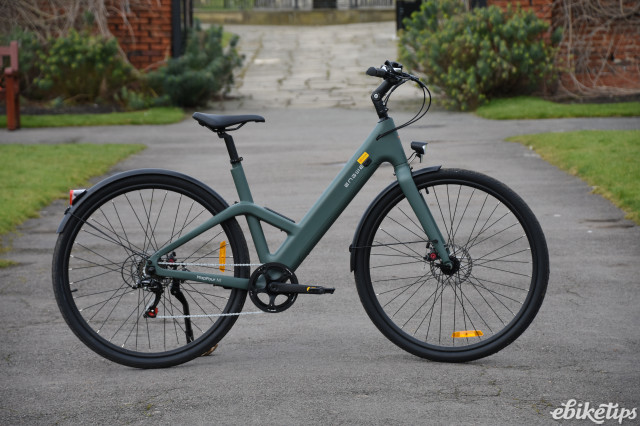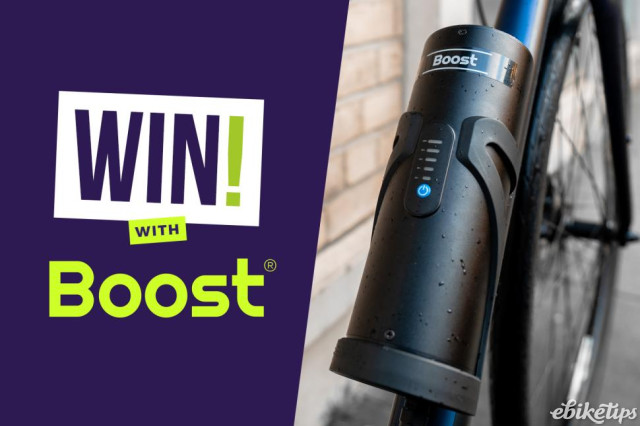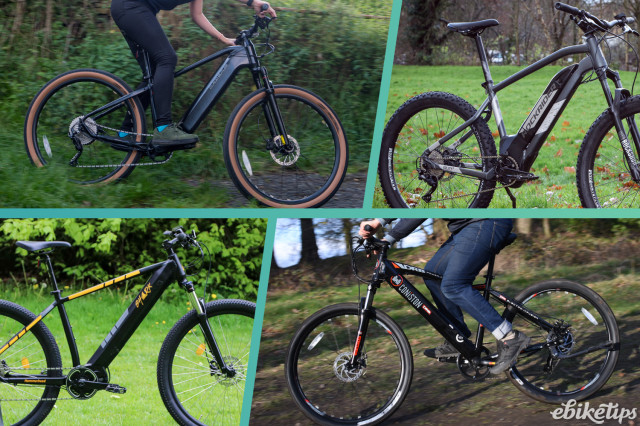Review: MATE City+

Overview
- Good ride from the full suspension frame
- Fold is reasonably neat
- Motor lacks power
- Battery readout affected by motor load
- Control system limits assistance speed in lower modes
The MATE City+ is the company’s more city-oriented model: the clue’s in the name. It doesn’t have the chunky tyres of the MATE X that we recently reviewed, and as a result it’s lighter and makes more sense as a folder. The motor’s not powerful enough, though. And it’s not light enough to be universally ideal for multi-modal transport.
MATE burst onto the scene in 2018 with the MATE X which they described as “The coolest foldable eBike EVER”. And it certainly caught the zeitgeist, grossing over $12m in pre-orders. Having had the bike now we can agree that it’s quite a fun and quirky bike, although it’s heavy and the fold is pretty pointless. The City+ is building out the range in a more urban-focused direction. The City+ keeps the basic design of the X, with a central beam holding the battery internally in the frame, and a standard fold packing the bike down for travel. But gone are the 4” tyres and instead the City+ has a standard 20” wheelset with sensible-looking rubber fitted. The full-suspension alloy frame gets a lockout fork at the front and a basic-looking damper to the rear.
Like the MATE X power comes from a rear hub motor. There’s a 468Wh battery in the frame; for £200 less you can have the standard City spec which is a 360Wh unit. There’s a colour display and a remote; lights and mudguards are cost options. You get a 7-speed Shimano transmission with a Revoshift twist shifter and an Altus rear mech, and Wellgo folding pedals.
The City+ frame is only available in one size, but MATE claims that anyone from 150cm up to 200cm should be able to ride it, and there’s a maximum rider weight of a generous 125kg. Certainly I didn’t find it too cramped at 189cm, and there was plenty of seatpost left for taller riders. If you’re very short you’ll probably find the front end quite high. The saddle and grips are comfortable enough.
The ride of the City+ is pretty decent. The rear shock is basic, but it does take the sting out of potholes without bucking the bike in the air. At the front, budget forks are usually horrible in one way or another, but one of the benefits of small wheels is that a fork isn’t especially long, and because of that is less prone to flex. The damping in the fork is agricultural, but I’ve used much worse. On this bike it probably nudges into being a net benefit, and that's very often not the case.
Steering is reasonably neutral, and although there’s an amount of flex from the long steerer tube it doesn’t adversely affect the handling too much. Hauling yourself to a stop using the Tektro mechanical disc brakes is simple enough: they have plenty enough bite to stop the bike’s 21kg mass even on the steep stuff.
The motor is nominally rated at 250W, but in all honesty it’s not especially powerful and it’s near the bottom end of the 250W motors I’ve tried in terms of its ability to get me up my benchmark hill (1.5km at 5% average with a 12% section). The bike is geared quite intelligently, so the lowest gear is good for climbing, but even then I was having to put in some significant effort to get myself round the steep corner. Certainly it wasn’t anywhere near as powerful as the motor in the Apache Wakita City I tested recently, which is a cheaper bike. If you live somewhere hilly then this probably isn’t the bike for you.
There are five levels of assistance, which as usual for a cheap motor system is two too many; also it has the annoying trait of limiting the assistance speed when in lower modes. So if you’re in level 3, for example, the motor cuts out at about 21km/h. Just because I don’t need the full power of the motor doesn’t mean I want to crawl along, thanks.
468Wh is a decent battery size, and MATE says that the City+ has a range of up to 80km. Hilly Bath is tough on batteries, and I managed to get three laps of the commute in (about 27km and 500m of climbing) before the range anxiety kicked in and I was reaching for the charger. This is exacerbated by two things. Firstly, the bike is noticeably better when it’s fully charged; below about half charge the hill was even more of a struggle. Also, the battery readout is heavily affected by the load on the motor, so when you’re chugging uphill the charge drops on the display. The City+ has a percentage display of battery remaining but it’s basically meaningless; on one ride the battery dropped to below 40% as I was cresting a big hill and recovered to about 65% on the freewheel down the other side. Even if it was just a four-bar graphic you’d be loath to trust it, to be honest.
The fold is effective: the narrower wheels of the City+ over the MATE X give it a smaller folded volume and it’s almost 10kg lighter, so much easier to manhandle onto a train or into the boot of a car. It’s still 21kg though, so if you’re slight or physically imparied then you might have trouble lifting it still. And it’s still big enough that you’ll need a decent boot in your car to get it in with the seats up. It is certainly in “usable folding bike” territory for a lot of people.
Overall the MATE City+ is okay, but where the MATE X is partly relying on its quirky mix of features and its backstory of the super-successful crowdfunder, the City+ really needs to do it solely on merit, and compared to some of the other options it doesn’t look like the best option out there.
If you want a folding bike for this kind of money then our pick at the moment is the MiRider. It weighs less than 18kg, folds up impressively small, and costs less than the City+. Okay the battery is small, but really a folding bike isn’t designed for long treks, and I wouldn’t fancy more than about a half-hour on the MATE: range is a secondary consideration most of the time for a folder. The Raleigh Stow-e-Way is also worth a look: it’s heavier than the MiRider but has a bigger battery and a full city setup with lights and mudguards. Between the MATE City and City+ the cheaper bike would get my vote: save the £200 on the bigger battery and you’ll save some weight too. But neither would be top of my list.





